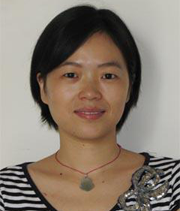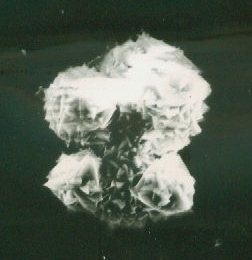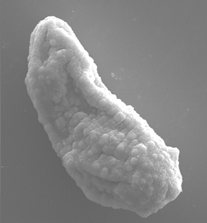
henPing Ming, PH.D
E-mail Address: mingzp@163.com
Office Address: 185# DongHu Road, Wuhan, Hubei, 430071
Position(s):
Associated Professor
Affiliation(s):
Department of parasitology
Research interests / Specialties:
Gene function of mothorsporocyst of Schistosoma japonicum / Cell culture of Schistosoma japonicum
Education and Training
B.S., 1993-1998 Wuhan University, China
Ph.D., 2001-2006 Wuhan University, China
Training,2001.1-12 Institute of aquatic biology, Chinese Academy of Sciences, China
2002.9-12 Fukushima University, Japan
Research Description
1. Cell culture ofSchistosoma japonicum:To establish a culture cell line from Schistosoma japonicum (S. japonicum) which could proliferate continuously, we tried many external substances in culture system, such as cell factors, extracellular matrix, mitogen and so on, could promote the growth, metabolism and proliferation of the cultured cells from S. japonicum, however, just a few cell divided and only lasted a very short time. Then, N-Methyl-N-Nitro-N-Nitrosoguanidine (MNNG), a chemical mutagen which can affect cell DNA directly, was used in study to induce the culture cells and adult S. japonicum, it successfully induced the proliferation of the cultured S. japonicum cells, the growth pattern of divided cells accordingly changed from dispersed monolayer to overlapping cells, but these induced cell masses couldn’t be passaged successfully.

Dividing cells ofS.japonicum
2. Genes functionsof mothorsporocyst ofSchistosoma japonicum:We established a co-culture system between mother sporocyst ofSchistosoma japonicumand intermediate host Oncomelania hupensis, identified some differentially-expressed genes which related closely with growth and development of mother sporocyst. Our recent research focus on these differentially-expressed genes which are closely related with apoptosis, protein metabolism, glycometabolism and ribosome synthesis. Furthermore, the functions of these genes in growth and development of mother sporocyst will be explored to reveal and clarify the growth mechanism of mother sporocyst

Mothersporocyst ofS.japonicum
Publication list
1.Zhenping Ming, Huifen Dong, Qinping Zhong, Christoph G. Grevelding and Mingsen Jiang. The effect of a mutagen (N-methyl- N-nitro-N-nitrosoguanidine) on cultured cells from adult Schistosoma japonicum.Parasitol. Res.2006, 98(5): 430-437.
2.Z.-P. Ming,H.-F. Dong, Q.-P. Zhong and M.-S. Jiang. The effect of a mutagen (MNNG) on adult Schistosoma japonicum and its cultured cells.Proceedings of the 11th international congress of parasitology ICOPA XI(August 6-11, 2006, Glasgow, Scotland, United Kingdom). Medinond S.r.l. Monduzzi Editore - International Proceedings Division. pp493-496.
3. Wu gengxiang, Li juanjuan,Ming Zhenping. Study on the latent factors of schistosomiasis transmission in the Three Gorges Reservoir areas in Hubei.Chinese Journal of Endemiology. 2007,26(6):81-83。(Corresponding author)
4.Ming Zhenping, Zhong Qinping, Dong Huifen, et al.Effects of N-Methyl-N-Nitro-N-Nitrosoguanidine on carbohydrate in cultured cells from adult Schistosoma japanicum.Chinese Journal of Public Health. 2006,22(1):50-52.
5.Ming zhenping, Zhong Qinping, Dong Huifen, et al. Effects of the combined use of liver matrix and N-methyl-N-nitro-N-nitrosoguanidine(MNNG) on the content and distribution of carbohydrates in the cultured cells from adult Schistosoma japonicum.Chinese Journal of Zoonoses: 2006,22(3):259-262.
6.Ming zhenping, Dong Huifen, Zhong Qinping, et al. Dynamic changes of carbohydrate in cultured cells from adult Schistosoma japanicum and effects of liver matrix on them.Chinese Journal of Endemiology. 2005;24(5):513-516.
7.Ming Zhenping, Dong Huifen, Jiang Mingsen, et al. The function of MNNG on proliferation of cultured cell from adult Schistosoma japonicum.Central ChinaMedical Journal. 2001, 25(2): 85~86.
8.Ming Zhenping, Dong Huifen, Jiang Mingsen. Detection of Cryptosporidiosis.Chinese Journal of Zoonoses.2001, 17(5):103-106.


